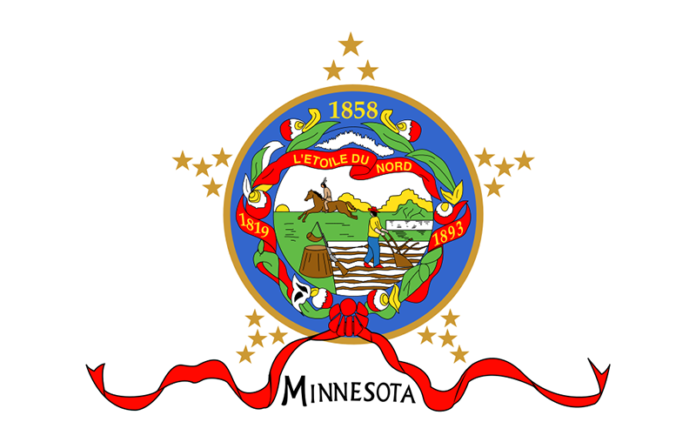Gettysburg was a legendary clash of arms in July of 1863 that helped turn the tide of the American Civil War. The battle cost the Union and Confederate armies a combined 50,000 men.
It made heroes out of men like Joshua Lawrence Chamberlain, John Buford and Lewis Armistead. And it made obscure Pennsylvania locations like Cemetery Ridge, Devil’s Den and LIttle Round Top a part of U.S. history.
When it was over, Maj. Gen. George G. Meade’s Union Army of the Potomac defeated Gen. Robert E. Lee’s Army of Northern Virginia. Lee’s force, while battered, was still not crushed. That would take another two years.
But the defeat at Gettysburg ensured that the Confederate’s would never again launch a large-scale invasion of the North.
The outcome of the battle might have differed drastically if not for the sacrifice of 262 infantrymen from Minnesota.
The Confederate Attack on Cemetery Ridge
The battle began on July 1, when Southern infantry clashed with Union cavalry outside Gettysburg. The fight evolved into an all-out battle, and the Confederates — with more soldiers in the vicinity — pushed the Northerners beyond Gettysburg, and the Union set up a defensive line anchored on heights of the town.
On July 2, Lee launched an attack that hit virtually all sectors of the North’s fish hook-shaped line. The Confederates broke through at some points, but Union commanders were successful in hurrying reinforcements threatened areas to choke off the penetrations.
In the early evening, an Alabama brigade led by Brig. Gen. Cadmus M. Wilcox scattered a Union force and began surging toward a thinly defended but important position on Cemetery Ridge.
Mar. Gen. Winfield Scott Hancock, who was commanding the Union II and III Corps in the center, needed time to move reinforcements to the threatened area. But all he could find at the moment was one understrength regiment — the First Minnesota.
The First Regiment, Minnesota Volunteer Infantry
The First Minnesota had fought for the Union cause from the beginning. At the first major battle of the war, Bull Run in July of 1861, the Minnesotans were among the last to leave the field after the Northern defeat. And they sustained the highest casualties of any Northern regiment.
The regiment continued to serve with what would become the Army of the Potomac, being engaged in the Seven Days’ battles and suffering heavy losses at Antietam.
The First Minnesota was spared the worst fighting in the Union defeats at Fredericksburg and Chancellorsville. But at Gettysburg, it poured out its blood once again.
Because scores of men had been detached for other duties, there were only 262 men present when Hancock encountered the First Minnesota commander, Col. William Colvill, on Cemetery Ridge.
The First Minnesota’s Immortal Charge
Three of Wilcox’s five regiments — perhaps 11,000 men — were in front of the First Minnesota’s path. So the Northern unit was outnumbered four or five to one.
But Hancock needed time to rush in reinforcements — “five minutes time,” he’d write later. So he ordered Colvill and his men to charge the larger Rebel force.
“Every man realized in an instant what that order meant; death or wounds to us all, the sacrifice of the regiment, to gain a few minutes’ time and save the position and probably the battlefield,” wrote Lt. William Lochren of the First Minnesota.
The regiment went sweeping forward with fixed bayonets in a charge that could in all fairness be called suicidal.
“I would have ordered that regiment in if I had known every man would have been killed,” Hancock wrote. “It had to be done.”
The Alabamans were disorganized and winded after charging nearly a mile, and the sudden attack by the small group of Minnesotans caught them off guard. The Confederates were momentarily thrown back; but they regained cohesion, and then delivered staggering fire into the Yankees.
The First Minnesota was virtually destroyed within minutes. Only 47 soldiers made their way back to the ridge. Colvill was seriously wounded, one of 215 casualties.
“They had not taken the Alabama flag, but they had held on to their own,’ Historian Shelby Foote wrote. “And they had given Hancock his five minutes plus five more for good measure.”
Hancock succeeded in bolstering the Union line with reinforcements in that 10 minutes, and the Alabamans were forced to retreat.
“There is no more gallant deed recorded in history,’ Hancock wrote of the First Minnesota’s charge.
First Minnesota Helped Repel Pickett’s Charge
Decimated as it was, the First Minnesota was not finished fighting at Gettysburg. Two companies that had been detached from the regiment, rejoined the unit, bringing the numbers back up to 150 men.
On the third day of the battle, the Minnesotans were called in to help smother Pickett’s Charge — the climatcit Confederate attack led by Gen. George E. Pickett. The First Minnesota suffered 45 more casualties, but Pvt. Marshall Sherman managed to capture the colors of the 28th Virginia.
Two members of the regiment — Sherman and Cpl. Henry O’Brien — received the Medal of Honor for heroism at Gettysburg.
The First Minnesota After Gettysburg
The regiment remained with the Army of Potomac until April of 1863, when it completed its term of enlistment. Some members re-enlisted and joined newcomers to form the First Minnesota Battalion, which served until the end of the war in 1865.
Sources:
- Foote, Shelby; The Civil War, A Narrative; Vol II, Fredericksburg to Meridian, Vintage Books, 1993
- Jordan, David. M; Winfield Scott Hancock: A Soldier’s Life, 1988, Indiana University Press
- Leehan, Brian; Pale Horse at Plum Run: The First Minnesota at Gettysburg, Minnesota Historical Society Press, 2002
- Moe, Richard; The Last Full Measure: The Life and Death of the First Minnesota Volunteers, Minnesota Historical Society Press, 1993
- A Short History of the First Regiment, Minnesota Volunteers, First Minnesota.org
- Tsouras, Peter. G; The Book of Military Quotations, Zenith Press, 2005








